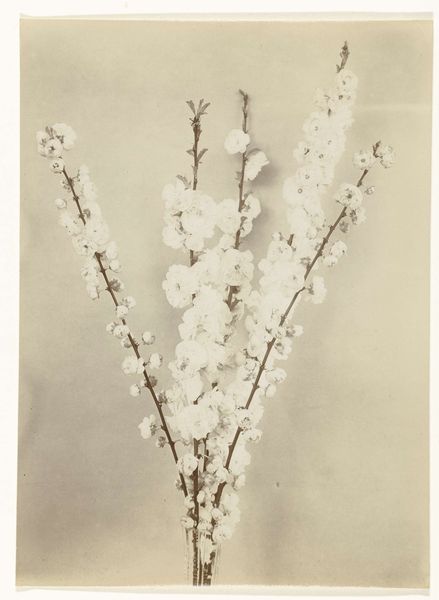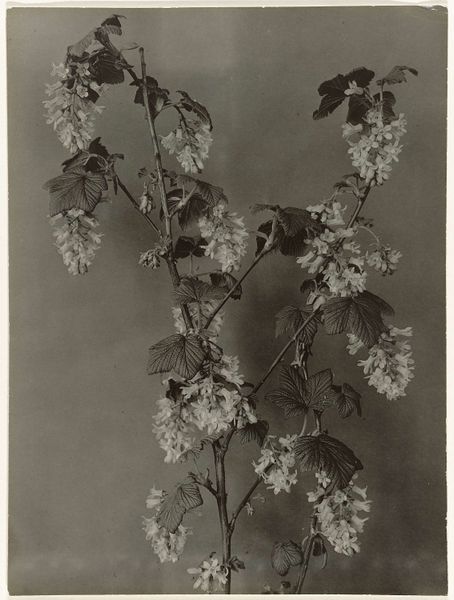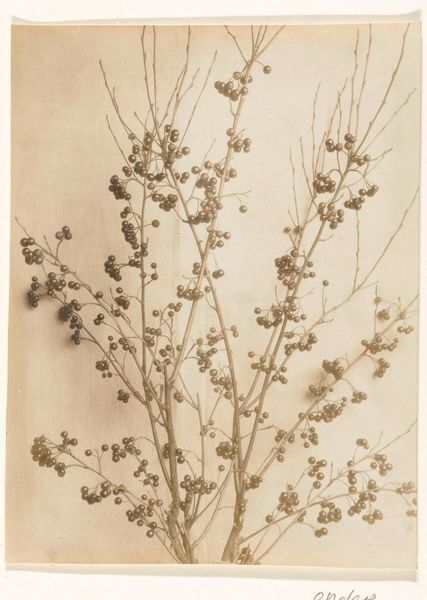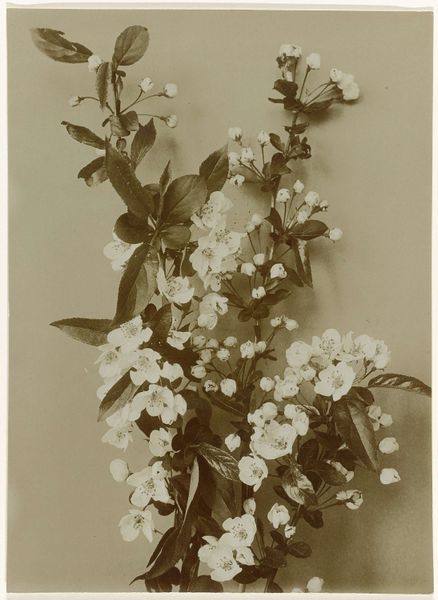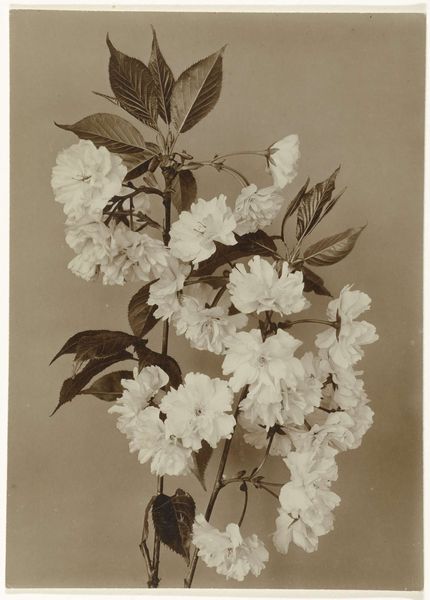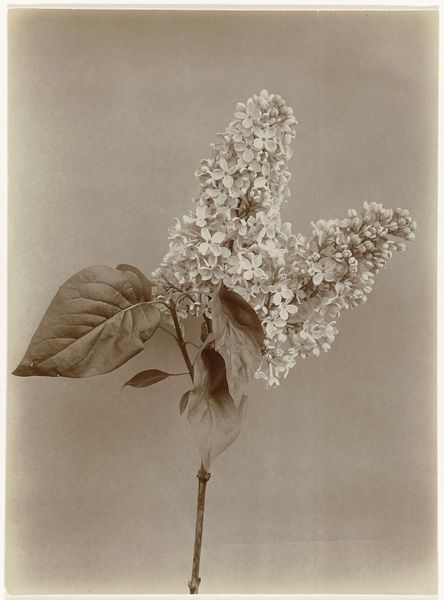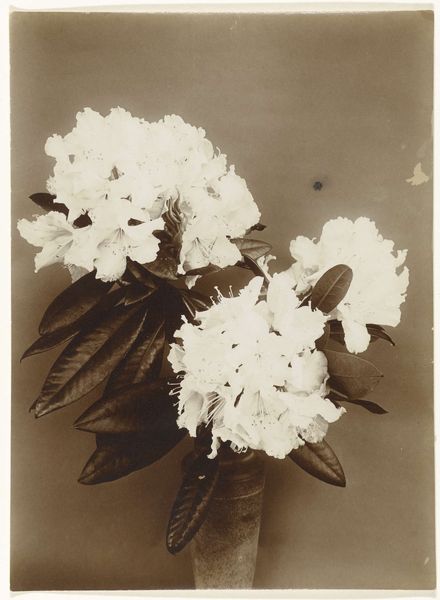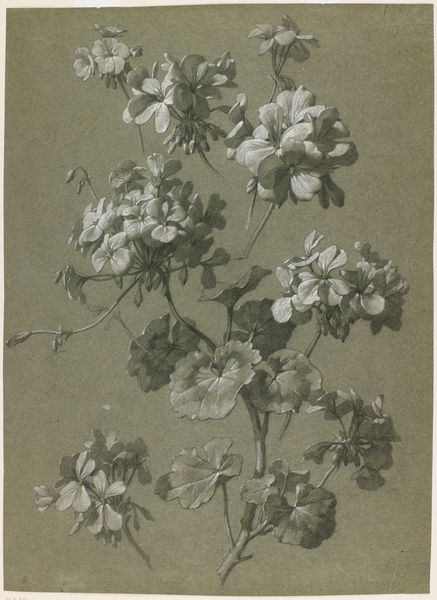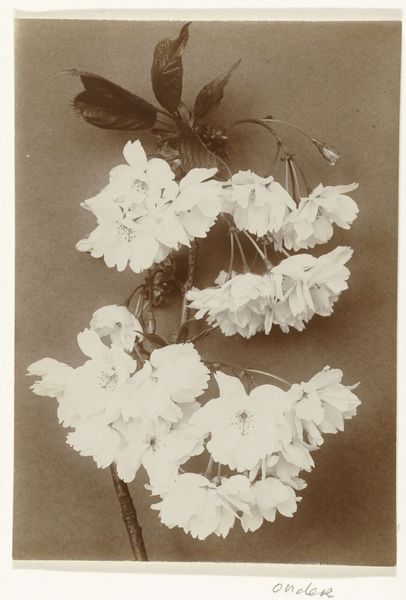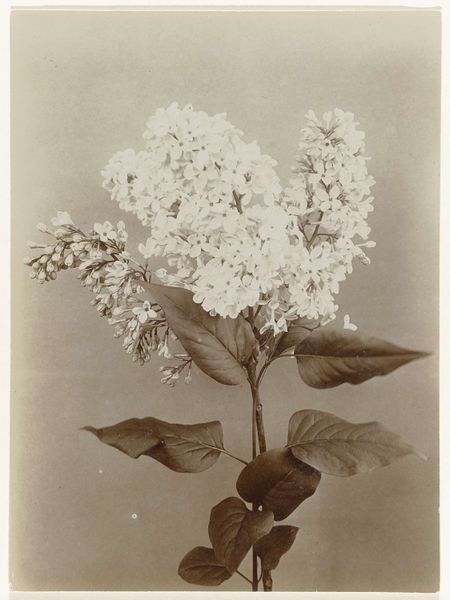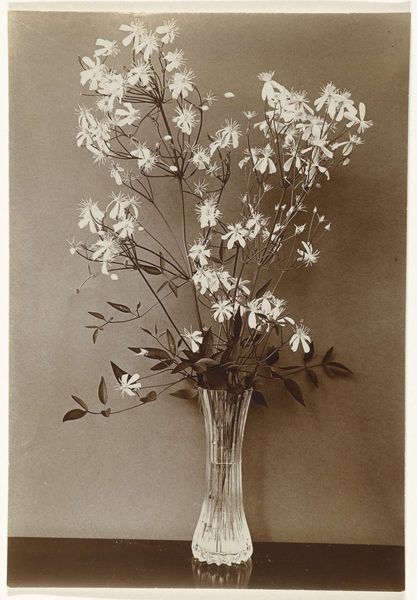
Dimensions: height 221 mm, width 162 mm
Copyright: Rijks Museum: Open Domain
Curator: At first glance, I'm struck by its fragility, a captured moment of fleeting beauty. Editor: Exactly. "Sleedoorn bloesemtakken," or Blackthorn Blossom Branches, attributed to Richard Tepe, invites us to consider the dance between nature and early photography between roughly 1900 and 1940. But for me, it whispers stories about industrial processes and changing notions of 'beauty' Curator: Tell me more about that! What makes you see that narrative? Editor: Well, photography in this era wasn't just about pointing and shooting. The preparation of photographic materials involved heavy industry – the mining of raw materials for the glass plates, the manufacturing of the chemical developers, the entire logistical chain required to get that glass plate into the photographer's hands. Each print also embodies that labor from material preparation. Curator: That’s such a material reading of what appears delicate and pastoral. To me, it’s much more straightforward: the softness in the monochrome palette is exquisite! Editor: Sure, there's artistry involved in composing the shot, in playing with light and shadow. But what interests me is what happens before and after the "art." What dyes, papers, processes made the look? I get wrapped up in who touched this photograph through its making—that it came from something messy and concrete, rather than "pure beauty". Curator: So, it’s about bringing the unseen into the spotlight? Interesting—revealing the grounded processes in creating the seemingly ephemeral moment? Maybe photography IS a means of immortalization. A way to consider and prolong beauty! Editor: Precisely! And perhaps questioning whose hands shape what is considered "art," moving beyond Romantic notions of artistic genius to examine the collaboration between people and technology that enables art's creation. Curator: Hmm, from an image celebrating nature’s ephemerality, to considering industry... you certainly make one ponder the layered narrative behind even the simplest captured frame. Thank you. Editor: No problem, it’s these shadows behind the thing itself which keep us considering meaning over and over again.
Comments
No comments
Be the first to comment and join the conversation on the ultimate creative platform.
